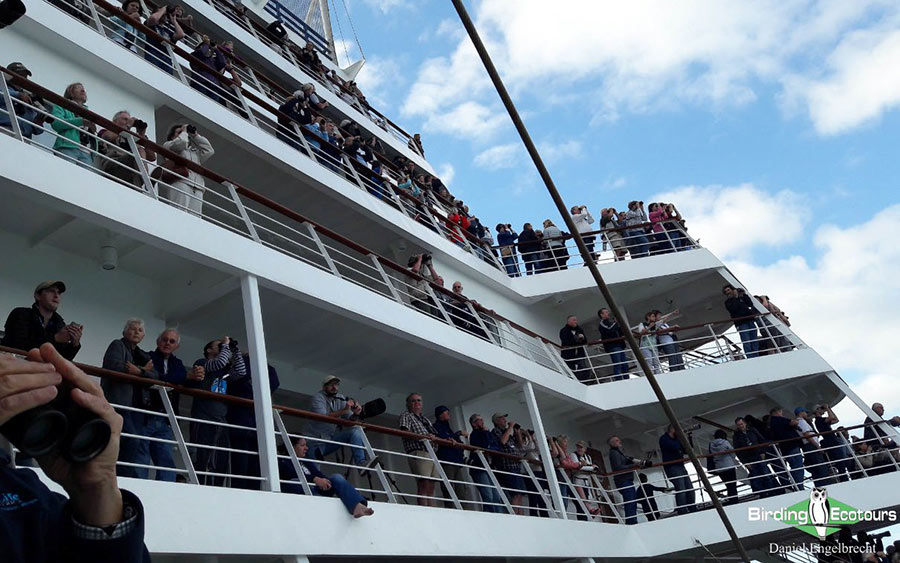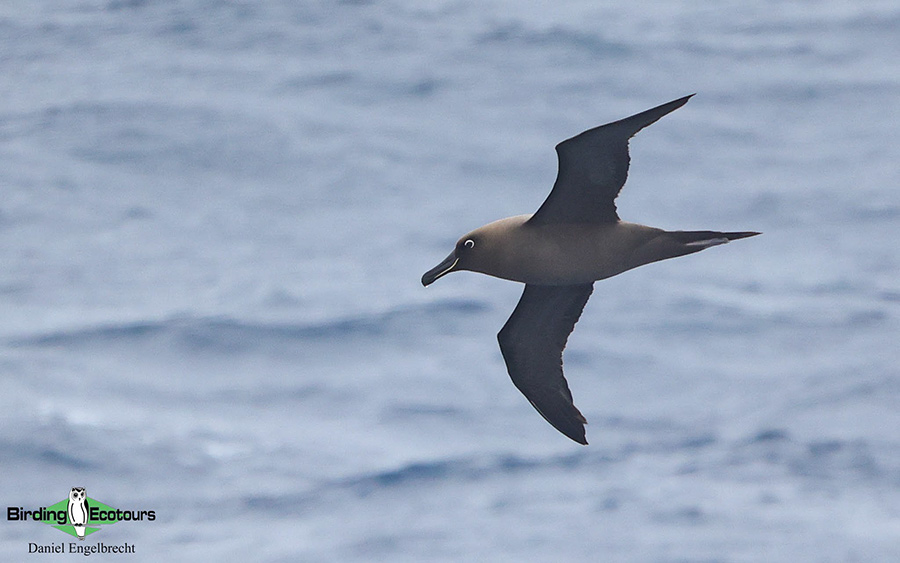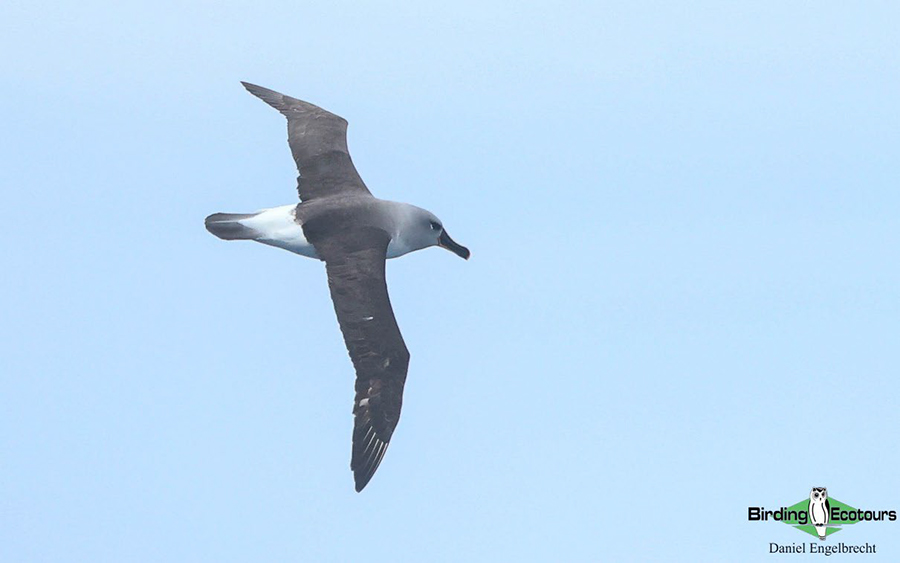Daniel Engelbrecht reflects on his experiences aboard the previous Birdlife South Africa Flock at Sea events and what he looks forward to most on next year’s trip.
I woke up to dozens of messages, slightly startled. I opened the first one from a friend; he had sent an image of a Wandering Albatross with the caption, “HERE WE GO AGAIN!” I knew what this meant; we were going to Marion again.
For those who need a bit of context, Birdlife South Africa has been taking pelagic birding to a whole new level for more than ten years and recently announced that they will be running another trip to the waters of Marion Island in January 2025. What are these “Flock” events? In summary, Birdlife South Africa charters a cruise ship and hosts a mass gathering of birders. These trips offer exceptional pelagic birding from the comfort of a cruise ship and feature an array of expert seabird guides and presentations about birding and conservation.
I’ve had a long history with these events; in 2013, when I was mid-way through primary school, I stepped aboard the incredible MSC Opera for what Birdlife SA called “Flock at Sea” – the first instalment of a recurring event that has now become a household name in the birding community. This was my first pelagic birding experience. I vividly recall peering over the railing on the deck and seeing my first albatrosses, petrels, storm petrels, and shearwaters. The trip had everything one could wish for: presentations by fabulous guest speakers, a 24/7 supply of limitless food, opportunities to meet other birders and excellent pelagic birding. It even featured a morning in Walvis Bay, Namibia, where I managed to see the range-restricted Dune and Gray’s Larks.

Typical scenes aboard a Flock at Sea event!
The event was a resounding success, and two years later, news broke that there would be another Flock at Sea, rather straightforwardly called “Flock at Sea, AGAIN.” I was once again extremely fortunate to find myself at the stern of the MSC Sinfonia in 2017, whilst Grey and White-headed Petrels, along with the larger Sooty and Wandering Albatrosses, showed off to the hundreds of birders huddled together. The birding on this trip was nothing short of spectacular. As it focused exclusively on the deep southern waters of the subregion, it allowed many birders to tick off mega subregion birds for their Southern Africa lists – most notably, a Light-mantled Albatross, which still hurts me as I type its name – I’ll let you imagine why (the buffet played a terrible role in this story).

The stunning Sooty Albatross will likely be seen around Marion Island in good numbers.
Once again, the 2017 event exceeded all expectations, and no one in their right mind could fathom how it could get any better. Fortunately, Birdlife SA decided to up the ante and announced that we would be going to Marion Island. Marion and the nearby Prince Edward Island are seldom seen by anyone other than a select few lucky (or unlucky?) researchers who get to spend a year in the hostile conditions of these sub-Antarctic Indian Ocean islands. After several hiccups due to the pandemic, we set sail from Cape Town and travelled over 2000 km to Marion Island. These islands are home to millions of breeding seabirds; in fact, nearly half of the world’s Wandering Albatross population breeds here, in addition to 27 other seabird species.
The waters around the islands were teeming with life; it seems almost absurd to say it, but we often had several Wandering Albatrosses together, rafts of Sooty Albatrosses, regular fly-bys from Grey-headed and even Light-mantled Albatrosses – and these are only the albatross highlights! White-headed Petrels and Blue Petrels navigated the winds at high speed, whilst dainty Grey-backed Storm Petrels fluttered around floating kelp. Quick reactions and careful scanning yielded Common Diving Petrels as well as Macaroni, Southern Rockhopper, and the regal King Penguin. Despite having spent a fair amount of time at sea, I can confidently say that our time around Marion was my best pelagic birding experience and an all-time birding highlight.
We left Marion after a full day in the waters surrounding the island and set off to Durban in a state of disbelief. This trip had a final surprise in store for us when a Tristan Albatross, a critically endangered member of the Wandering Albatross complex (now elevated to full species status according to both Clements and IOC taxonomy), provided extended views for almost all on board. This global mega was an immediate highlight for many.

Although less common than some of the other albatross species around Marion, Grey-headed Albatross should put in an appearance.
It goes without saying that I took little convincing to join “Flock to Marion, AGAIN”. The event will be a round-trip voyage from Durban, a part of the country that is in itself an exciting birding destination. I look forward to improving my photographs of these wonderful pelagic species, meeting new birders, and I would love a Kerguelen Petrel for my lifelist. If there is one thing I have learned from attending the last three Flock at Sea events, it is that my expectations are likely to be exceeded once again. For those needing a little more convincing, the previous Flock to Marion event raised over three million rand (~$160 000) towards the Mouse Free Marion Project – a conservation drive to eradicate the mice introduced on the island,threatening breeding seabirds. This is not a trip you want to pass up the opportunity to join, and I hope to see some of you on board!
